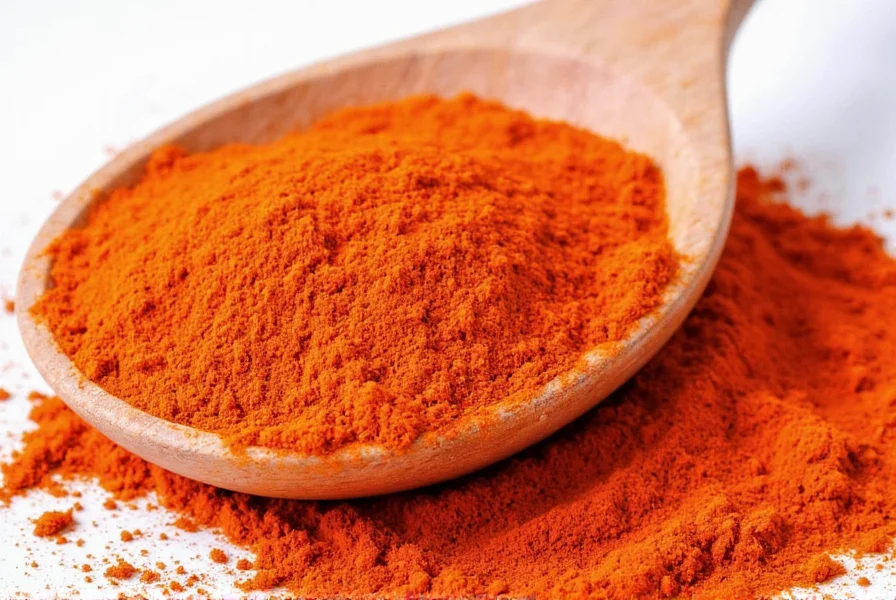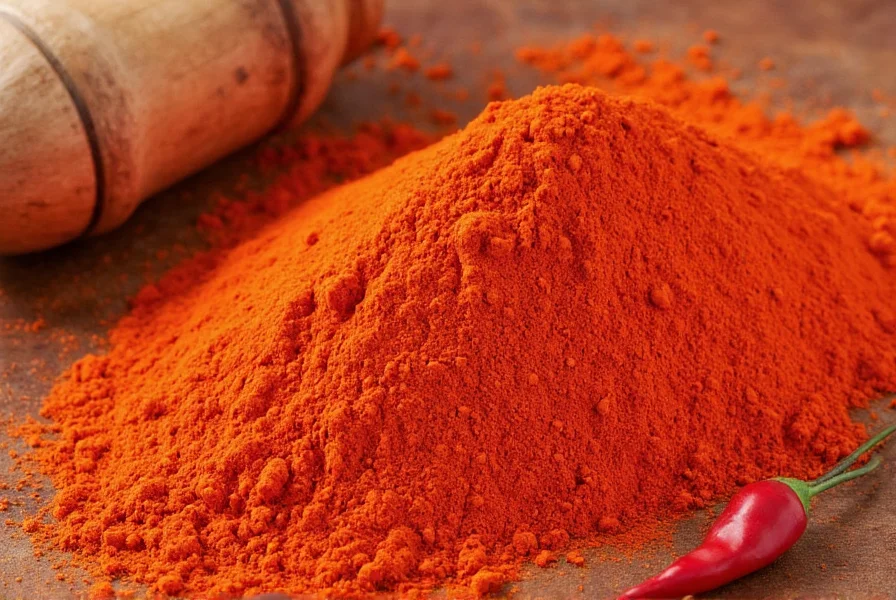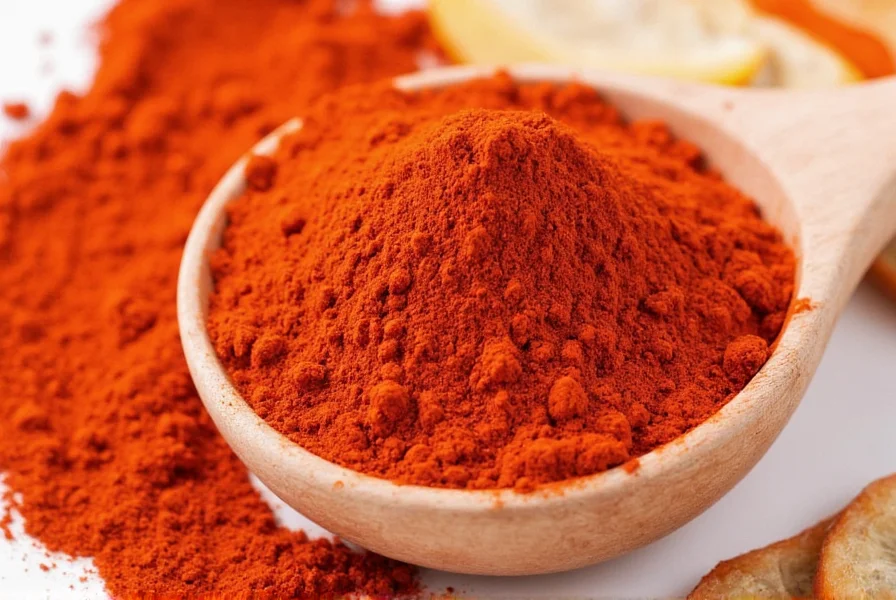Cayenne pepper powder transforms ordinary dishes with its vibrant color and distinctive heat. This finely ground spice, derived from ripe cayenne peppers (Capsicum annuum), contains capsaicin—the compound responsible for both its fiery sensation and numerous health properties. Understanding its proper usage, storage, and benefits helps home cooks and health-conscious individuals maximize its potential without overwhelming their palate.
What Exactly Is Cayenne Pepper Powder?
Cayenne pepper powder consists of dried, mature cayenne peppers that have been ground into a fine consistency. Unlike chili powder blends that often include additional spices like cumin and garlic powder, pure cayenne pepper contains only the ground fruit of the cayenne pepper plant. This distinction matters when following recipes that specify cayenne pepper powder versus generic chili powder.
The heat level of cayenne pepper powder typically ranges from 30,000 to 50,000 Scoville Heat Units (SHU), placing it significantly hotter than paprika (500-1,000 SHU) but milder than habanero peppers (100,000-350,000 SHU). This moderate heat profile makes it versatile for adding spice without completely dominating a dish's flavor profile.

Nutritional Composition and Active Compounds
The primary bioactive compound in cayenne pepper powder is capsaicin, which accounts for most of its health benefits. A single teaspoon (2 grams) of cayenne pepper powder contains approximately:
| Nutrient | Amount per Teaspoon | % Daily Value |
|---|---|---|
| Calories | 6 | 0% |
| Vitamin A | 44% DV | Excellent source |
| Vitamin C | 7% DV | Good source |
| Vitamin B6 | 5% DV | Moderate source |
| Potassium | 3% DV | Small amount |
| Capsaicin | 0.1-0.2% by weight | Active compound |
Beyond these basic nutrients, cayenne pepper powder contains flavonoids, carotenoids, and other phytochemicals that contribute to its antioxidant properties. The capsaicin concentration directly correlates with the pepper's heat level and many of its physiological effects.
Evidence-Based Health Benefits of Cayenne Pepper Powder
Research supports several health benefits associated with regular, moderate consumption of cayenne pepper powder:
Metabolic Enhancement
Multiple studies indicate that capsaicin can increase metabolic rate by approximately 5% for several hours after consumption. This thermogenic effect may support weight management efforts when combined with a healthy diet and exercise. The compound also appears to reduce appetite slightly, potentially decreasing overall calorie intake.
Anti-Inflammatory Properties
Capsaicin demonstrates significant anti-inflammatory effects by inhibiting certain inflammatory pathways in the body. Regular consumption may help reduce markers of inflammation, potentially benefiting conditions like arthritis. Topical capsaicin creams are already FDA-approved for pain management, though dietary consumption works through different mechanisms.
Circulatory Support
Cayenne pepper powder promotes healthy blood flow by supporting the dilation of blood vessels. This effect may contribute to maintaining healthy blood pressure levels. The vitamin K content also supports proper blood clotting function.
Culinary Applications and Usage Tips
Understanding how to properly use cayenne pepper powder elevates your cooking while preventing overpowering heat:
Measurement Precision
Due to its intense heat, precise measurement is crucial. Start with 1/8 teaspoon for a standard recipe serving 4-6 people, then adjust to taste. Remember that heat perception increases over time, so wait several minutes before adding more. When substituting for fresh cayenne peppers, use 1/2 teaspoon powder for each whole pepper.
Versatile Recipe Applications
Cayenne pepper powder excels in numerous culinary contexts:
- Spice rubs for meats, particularly chicken and fish
- Enhancing tomato-based sauces and soups
- Adding depth to chocolate desserts (use sparingly)
- Boosting egg dishes like scrambled eggs or frittatas
- Creating spicy aiolis and dipping sauces

Cayenne Pepper Powder vs. Similar Spices
Understanding the differences between cayenne pepper powder and related spices prevents recipe mishaps:
- Cayenne vs. Chili Powder: Pure cayenne pepper powder contains only ground cayenne peppers, while chili powder is typically a blend containing cumin, garlic powder, oregano, and sometimes paprika along with milder chili peppers.
- Cayenne vs. Paprika: Paprika ranges from sweet to hot varieties but generally lacks the intense heat of cayenne. Hungarian paprika offers rich flavor without significant heat, while smoked paprika provides a different flavor profile altogether.
- Cayenne vs. Red Pepper Flakes: Crushed red pepper often contains a mix of辣椒 varieties and may include seeds and membrane, creating a more textured, variable heat experience compared to the consistent heat of ground cayenne.
Proper Storage for Maximum Freshness
To preserve the vibrant color, flavor, and potency of cayenne pepper powder:
- Store in an airtight container away from light and heat sources
- Keep in a cool, dark cupboard rather than near the stove
- Avoid storing in the refrigerator where moisture can degrade quality
- Check potency periodically—fresh cayenne should have a strong aroma
- Replace after 2-3 years for optimal flavor and nutritional benefits
Properly stored cayenne pepper powder maintains its vibrant red color. If it begins to fade toward orange or brown, the spice has likely lost significant potency and should be replaced.
Potential Side Effects and Precautions
While generally safe for culinary use, cayenne pepper powder may cause issues for some individuals:
- Digestive sensitivity: Those with GERD or ulcers may experience increased discomfort
- Skin irritation: Always wash hands after handling and avoid touching eyes
- Medication interactions: May affect blood thinners and blood pressure medications
- Allergic reactions: Rare but possible, especially in those sensitive to nightshade plants
Start with small amounts if you're new to cayenne pepper, and consult your healthcare provider if you have specific health concerns or take medications that might interact with capsaicin.
Frequently Asked Questions
What's the difference between cayenne pepper powder and chili powder?
Cayenne pepper powder contains only ground cayenne peppers, delivering consistent heat (30,000-50,000 Scoville units). Chili powder is typically a blend that includes cumin, garlic powder, oregano, and milder chili peppers, resulting in a more complex flavor profile with less intense heat.
How much cayenne pepper powder equals one fresh cayenne pepper?
Approximately 1/2 teaspoon of cayenne pepper powder equals one whole fresh cayenne pepper. However, heat levels can vary between fresh peppers and commercial powders, so it's best to start with less and adjust to taste.
Can cayenne pepper powder help with weight loss?
Research shows capsaicin in cayenne pepper may temporarily increase metabolic rate by about 5% and slightly reduce appetite. While it can be a helpful component of a weight management strategy, it's not a standalone solution and works best when combined with a balanced diet and regular exercise.
How long does cayenne pepper powder stay fresh?
Properly stored in an airtight container away from light and heat, cayenne pepper powder maintains optimal flavor and potency for 2-3 years. After this time, it remains safe to consume but gradually loses its vibrant color, aroma, and heat intensity.
What are the best ways to use cayenne pepper powder in cooking?
Cayenne pepper powder works well in spice rubs for meats, tomato-based sauces, egg dishes, and even chocolate desserts (use sparingly). For best results, add it early in cooking to allow flavors to meld, but be cautious with measurements as its heat intensifies over time. Always start with small amounts and adjust to taste.











 浙公网安备
33010002000092号
浙公网安备
33010002000092号 浙B2-20120091-4
浙B2-20120091-4